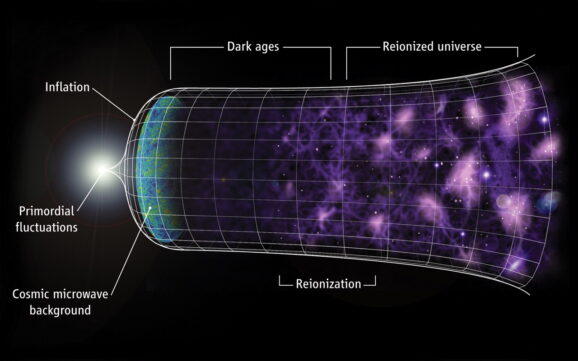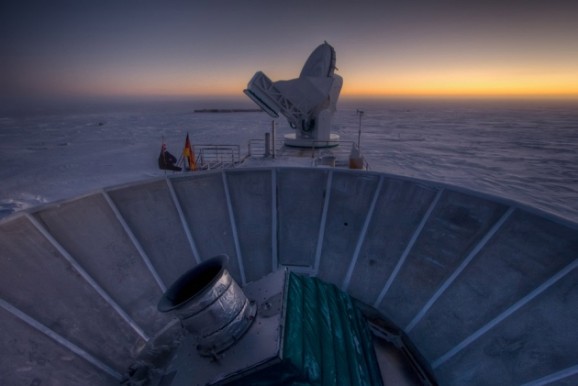We Now Have Direct Evidence Of The Big Bang And Cosmic Inflation
This article is more than 2 years old
 Yesterday, the internet was abuzz with rumors about today’s scheduled announcement from the Harvard Smithsonian Center for Astrophysics. Many people predicted — correctly, as it turns out — that the announcement would involve the detection of gravitational waves. What’s so important about these waves? Well, they’re the first direct evidence we’ve ever found of the Big Bang and the resulting expansion of the universe.
Yesterday, the internet was abuzz with rumors about today’s scheduled announcement from the Harvard Smithsonian Center for Astrophysics. Many people predicted — correctly, as it turns out — that the announcement would involve the detection of gravitational waves. What’s so important about these waves? Well, they’re the first direct evidence we’ve ever found of the Big Bang and the resulting expansion of the universe.
For a long time now, scientists have been looking for gravitational waves using the BICEP telescope (Background Imaging of Cosmic Extragalactic Polarization), but in the noise of all the cosmic microwaves, they hadn’t been able to find them…until now. The discovery has, ironically, been called the “holy grail of cosmology,” and some predict this discovery to garner a Nobel Prize.

When the Big Bang created our universe nearly 14 billion years ago, it caused these gravitational waves. To say our universe grew rapidly during that time would be an understatement — it exploded into being during what scientists refer to as “inflation.” The universe grew by 100 trillion trillion times in far less time than it took me to write this sentence.
What a dividend for the BICEP project, which deployed its special telescope in the South Pole from 2005-2008, and which has been sifting through the data ever since. The video below shows the cosmic microwaves in the sky. The BICEP website indicates that recent observations “hinted strongly” at the inflation mentioned above, but were “not sufficient to rule out other models of the early universe.” Well, they are now — time to update your website! What was missing in those earlier observations was the detection of the gravity-wave background, which could only result from inflation. And that’s exactly what they found.

The gravitational waves resulting from the expansion are still rippling across the universe, but were thought too weak to detect. However, the BICEP telescope was able to capture images of those gravitational waves from nearly 400,000 years after they began to spread through the universe, back when there were no stars or planets. The existence of the gravitational waves proves gravity’s quantum nature, and they also prove Einstein (specifically his theory of relativity) right — again. It will be interesting to see how physicists react to this, given that they’ve never quite been able to reconcile Einstein’s theory with quantum physics. Apparently the strength of the detected signals may lead toward new physics theories altogether. I’m sure scientists’ enthusiasm will be reignited in their quest to sort it out, though. The post-Big Bang inflation also explains the universe’s apparent uniform appearance and is consistent with a slew of other cosmic theories that haven’t been directly proven.
I only wish this evidence had come to light before Bill Nye debated Ken Ham.












